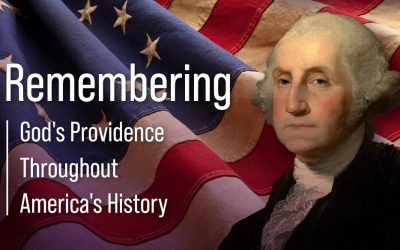Uncovering Thanksgiving Fact vs. Fiction – It’s STILL About Giving Thanks to God
“Everyone knows Thanksgiving is a myth,” she said.
It was an offhand comment from my high school senior daughter. I can’t even remember exactly what the conversation was about, but it caught me completely off guard.
Perhaps it was naivete, but I wasn’t aware that the historical facts surrounding that first feast were in question. My girl picked up that gem from AP US History Class. Not just any history – this was advanced placement, a high-level curriculum that’s supposed to take students deep into our nation’s past.
Had her “teacher” ever read William Bradford’s writings or any other firsthand accounts of that time? How about the Mayflower Compact? There is much recorded history of those early settlers at Plymouth. So, how could she teach my daughter it was a myth?
Note: We must remember that our kids don’t know what they don’t know. So, when a teacher claims certain things are factual, how would our students know to question it? That’s why we’ve got to be alert to our kiddos so we’re aware of what they are being taught. Mamas, your close relationship with your children is their greatest defense.
It’s become evident that a new version of Thanksgiving’s history is being spun by those who have squeezed it just enough to fit it into a racial narrative created by pseudo-intellectuals, activists, and government schools with media compliance.
America bad. Founders bad. You know, the whole oppressor/victim thing. Every nation has good and bad history, and we’re no different. However, when these America-haters seek to create cartoonish villains of early Americans, it’s often blatantly untrue.
There is some myth-busting to do here, but not how they envision it. We will dust off the history behind this beloved and uniquely American holiday as we uncover Thanksgiving fact vs. fiction.
Fact vs. Fiction: Pilgrims
Anyone who came to America during its early history is instantly cast as a one-dimensional evildoer. Where the Pilgrims are concerned, here are a few chief accusations: First, they claim that these early settlers didn’t even call themselves “Pilgrims.”
This reimagined history also claims this group traveled to America exclusively for financial gain. They quickly point out that the Mayflower didn’t arrive at Plymouth Rock – but Cape Cod. Finally, they explain that Pilgrims couldn’t have had gold buckles on their hats (as often portrayed in children’s art and school holiday programs) because they weren’t fashionable until decades later. This, for these activists, means we’ve all been living a lie.
It’s a lot of gotcha’s without much guts behind them.
FACTS:
A “Pilgrim” is defined as “a person who travels to a sacred place for religious reason.” A majority of the Mayflower passengers were Separatists who would later be tagged Pilgrims by history writers because of their quest.
Whatever you call them, these brave souls left Holland to travel to America for several reasons: conditions were difficult for the Separatists there, so financial concerns would’ve been part of the equation. They also had a great hunger to spread the Gospel. Also, very notably, they were deeply concerned for their children, much like many of us are today. As faithful Christians, they saw some darker influences of Dutch culture affecting their young. So, the reason is much more robust than the new historian-activist class would have you believe.
The Mayflower voyage promised a new start, with the freedom and opportunity to build a new society and to freely worship, believe, and adhere to the tenets of their faith. William Bradford, who became the Governor of Plymouth Colony, expressed the visionary thinking of he and his fellow Pilgrims: “A great hope and inward zeal they had of laying some good foundation… for the propagating and advancing the gospel of the kingdom of Christ in those remote parts of the world; yea, though they should be but even as stepping-stones unto others for the performing of so great a work.” 1
Then there’s the Cape Cod vs. Plymouth Rock thing. Yep, the Pilgrims first landed at Cape Cod. The Plymouth Rock element was introduced more than 100 years later by the son of one of the Mayflower passengers. He claimed his dad had told him that was the rock where they first set foot in America. So, the ten-ton stone became famous. Does that somehow negate the truths in the historical accounts? Not really. They did settle in Plymouth, and it’s worth pointing out that Cape Cod and Plymouth are a whopping 31 miles apart.
What about the buckles we see on hats in school plays? I’m sorry…are we supposed to care about that?
I’m definitely going to need a piece of pecan pie to get through this.
Fact vs. Fiction: Grave Robbing and the First Winter
Propagators of the anti-Pilgrim story claim that the settlers began their conquest by taking over a village and robbing the graves of that tribe. This part of their tale ramps up the insidiousness of the story for those with that goal – regardless of what is actually true.
FACTS:
The new settlers happened upon corn and stored supplies near a deserted village. They explored, looking for the inhabitants, wishing to purchase food for survival. No one was there. The entire tribe had been wiped out by an illness before the Pilgrims arrived.
Despite that find, the first New England winter was brutal, and the Pilgrims found themselves ill-equipped to grow food and find needed provisions. Cold and disease killed nearly half of their number. This isn’t emphasized in the new narrative – because sympathy for those lost during those deadly hardships doesn’t fit the need. However, it is part of the history of those who settled there.
The corn and supplies they found in the deserted village were from the Pawtuxet tribe of the famous native American, Tisquantum, better known as Squanto. He was instrumental in helping them recover, survive, and even begin to thrive.
Squanto had been kidnapped to Europe six years earlier but eventually was able to return to his homeland. He came back, a convert to Christianity who spoke fluent English. He taught Plymouth colonists how to grow corn and create proper housing to weather the brutal winters of that region. Further, he helped them communicate with other native tribes and proved a friend to the colonists. 2
As far as “grave-robbing,” I searched for any documentation of that online and found none – only unverified claims of those seeking to villainize these early immigrants.
Fact vs. Fiction: The Wampanoag
In keeping with the narrative about “evil” white Europeans, some writers and teachers have spun up a story about the Wampanoag tribe not having a good relationship with their white neighbors. Some contend that the Pilgrim Separatists looked down on them and thought them inferior. One such video even claimed as proof a letter by Edward Winslow, written in December of 1621.
FACT:
The letter that supposedly offered proof of racism and evil behavior contains nothing of the sort. Winslow told a friend in England about life at Plymouth Colony, the homes they’d built, the crops that now flourished, and praised God for those blessings. He also described the way they interacted with their nearest neighbors, the Wampanoag tribe, “and we for our parts walk as peaceably and safely in the wood, as in the highways in England, we entertain them familiarly in our houses, and they as friendly bestowing their venison on us. They are a people without any religion, or knowledge of any God, yet very trusty, quick of apprehension, ripe-witted…” 3
Their Chief Massasoit entered a treaty with Governor William Bradford that offered mutual protection from tribes threatening the Wampanoag. The treaty was in place for half a century.
Fact vs. Fiction: The First Thanksgiving
The rewriters of history have a real problem with this. Some openly claim that there was no possible friendly interaction between Pilgrims and native Americans. Some even claim that the feast was filled with fear and hidden agendas. Another key point was that since this feast wasn’t held annually, it couldn’t be considered Thanksgiving. They also inform us that they probably didn’t even eat turkey. And to top things off – they insist that it wasn’t a religious service, thus, not an occasion to thank God.
Nice try.
Come on – you can only buy that line of thinking if you don’t read the firsthand accounts of that event. If these writers, vloggers, and activists don’t include that reliable information, why do we listen to them? We don’t – but these agenda-driven narratives (CRT, we’re looking at you!) have become increasingly propagated in schools.
FACT:
The first Thanksgiving was a three-day feast commemorating the overwhelming bounty the Pilgrims enjoyed in the fall of 1621. After a disastrous previous year, the Plymouth Colonists celebrated big with their Wampanoag neighbors. The writings about this event share that they had games and activities, including shooting guns, which tribe members and Pilgrims enjoyed together. The reports reveal that the Wampanoag men brought five deer, and there were oysters, fish, eel, fruit, and vegetables. Winslow’s letter mentioned earlier also talked about the significant number of “fowl” killed for the feast. Could turkey have been there? Maybe…
His letter describes his gratitude considering that great feast, “And although it be not always so plentiful, as it was at this time with us, yet by the goodness of God, we are so far from want, that we often wish you partakers of our plenty.”
Considering the strong faith of the Pilgrims, it was undoubtedly a time they thanked God for His goodness and care. The books and letters recounting that time are rife with such expressions.
On November 26, 1789, President George Washington proclaimed for “the People of the United States a day of public thanksgiving.” Many years later, following an all-out effort by Sarah Josepha Hale to have Thanksgiving become a national holiday, President Lincoln fulfilled her wish during the height of the Civil War.4
The rest is turkey, dressing, pumpkin pie, football, long naps, and long talks with beloved family and friends. However, the center of this uniquely American holiday is giving thanks to God.
Gratitude is central to faith, American culture, and the family. Without it, we see too many of our fellow citizens’ entitled attitudes often leading to tragic breakdown or despair. At Thanksgiving – and every day– we must model to our children sincere humility and thanks to the God of Heaven who gave us life, each other, and this unique and blessed nation.
From our entire team at Moms for America, we are grateful for you and your friendship.
Happy Thanksgiving, mamas!
Podcast Note: Tune in to this week’s podcast for a fast-paced and fascinating discussion about the history of Thanksgiving with our special guest and President of Wallbuilders, Tim Barton.
***




